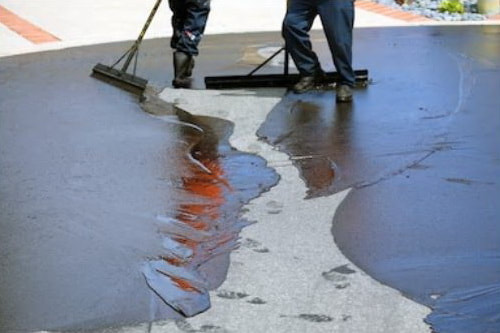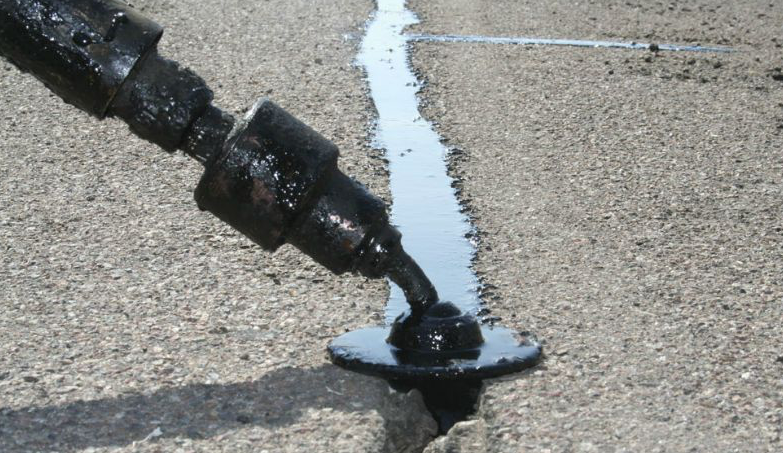Cold Mix Asphalt Vs. Hot Mix Asphalt: Which Is Right for You?

Make-up Differences
Cold mix and hot mix asphalts vary dramatically in their composition, with distinctive qualities that impact their efficiency and applications. Cold mix asphalt is created by emulsifying the asphalt binder with water and an emulsifying agent prior to blending it with accumulation. This technique allows for the asphalt to be convenient at lower temperature levels, making it excellent for short-term repairs and for use in chillier weather. Hot mix asphalt, on the other hand, is made at high temperature levels, typically in between 300-350 ° F, which aids to attain far better compaction and an extra durable end product. The hot mix asphalt manufacturing process entails warming the aggregate and asphalt binder individually prior to incorporating them at the asphalt plant.
In addition, cold mix asphalt tends to be much less dense and extra flexible than hot mix asphalt. This flexibility makes it much better fit for locations with greater levels of movement, such as driveways or roadways with heavy web traffic. On the other hand, warm mix asphalt is known for its high longevity and resistance to rutting and cracking, making it a favored option for highways and high-traffic roads where long life is critical.
Installation Process Differences
The process of mounting cool mix and hot mix asphalt displays notable variations in their requirements and procedures. In comparison, warm mix asphalt demands a much more fancy installment procedure. Due to the heating needs, hot mix asphalt installations are typically brought out by specialists with specialized devices, making certain a more structurally sound and permanent result.
Longevity and Durability Elements
When taking into consideration asphalt alternatives, resilience and longevity are vital elements to review for long lasting sidewalk performance. Warm mix asphalt (HMA) is known for its outstanding durability and longevity.
In regards to longevity, HMA generally outmatches CMA because of its premium strength and resistance homes. HMA sidewalks have a longer life span, needing much less regular repairs and maintenance, which can translate to cost savings in the future. Additionally, HMA sidewalks are extra conveniently adjustable to satisfy specific job needs, even more enhancing their longevity.
Expense Considerations
Taking into consideration click here for more info the financial effects is a vital element when assessing the choice in between warm mix asphalt (HMA) and chilly mix asphalt (CMA) for pavement tasks. While the preliminary price of hot mix asphalt is typically greater than that of chilly mix asphalt, HMA often gives a much more cost-effective remedy in the lengthy run due to its superior durability and longevity.
In addition to product costs, it's crucial to take into consideration the expenditures associated with installment and upkeep when comparing HMA and CMA. Inevitably, the decision between HMA and CMA need to take right into account not just the preliminary cost however additionally the lasting financial effects to figure out the most cost-efficient option for the specific pavement job.
Environmental Influence Contrast
Contrast of the environmental impacts between warm mix asphalt (HMA) and cold mix asphalt (CMA) exposes distinct differences in sustainability practices. HMA production requires high temperature levels, leading to boosted energy usage and greenhouse gas emissions.
Furthermore, the use of CMA commonly entails reusing existing asphalt pavement, advertising source conservation and decreasing the quantity of waste sent out to landfills. By choosing for CMA over HMA, roadway building projects can add favorably to environmental preservation efforts.
Verdict
To conclude, the option between cool mix asphalt (CMA) and hot mix asphalt (HMA) depends upon different elements such as make-up, setup process, resilience, long life, cost, and environmental impact. asphalt patch repair. While CMA offers a quick and cost-effective option for small fixings, HMA makes sure remarkable durability and long life for hefty traffic areas. Take into consideration these Visit Website elements meticulously to establish which kind of asphalt is the ideal selection for your paving requires

Thinking about the economic effects is an essential aspect when evaluating the option between hot mix asphalt (HMA) and cool mix asphalt (CMA) for sidewalk tasks. While the preliminary get redirected here price of hot mix asphalt is commonly higher than that of cold mix asphalt, HMA often provides a much more cost-effective service in the long run due to its remarkable resilience and durability. asphalt patch repair.Comparison of the ecological influences in between hot mix asphalt (HMA) and chilly mix asphalt (CMA) reveals distinctive differences in sustainability practices.In conclusion, the choice between cool mix asphalt (CMA) and warm mix asphalt (HMA) depends on numerous aspects such as make-up, installation process, resilience, long life, price, and environmental effect